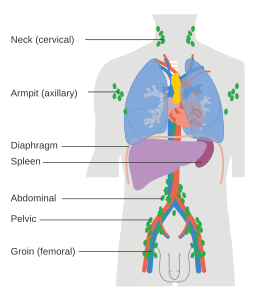
What exactly is Hodgkin disease? For starters, it is a form of cancer that impacts the lymphatic system, which is an integral component of the immune system. It is also known as Hodgkin Lymphoma.
Description of Hodgkin’s Lymphoma
The advent of abnormal cell growth signals the beginning of this disease. Once they expand beyond a required level, they begin to spread. Lymphomas are cancers that start in white blood cells known as lymphocytes. In essence, there are two fundamental types of lymphoma i.e. Hodgkin lymphoma and non-Hodgkin lymphoma (less common). Cells in the lymphatic system exhibit abnormal growth and can spread beyond its capacity. It is most common in adults between 20 and 40 years of age.
What is a Lymphoma?
To gain satisfactory knowledge of Hodgkin’s, it is imperative to grasp what lymphoma is. Only when we comprehend the latter can we begin to understand this disease better. The lymphatic system is part of the body’s immune system, which is designed to tackle infections and ailments. (You may have heard of them as lymph nodes). Another function of the lymph system is that it aids the flow of fluids throughout the body.
The lymph system is mainly comprised of cells called lymphocytes. This is a kind of white blood cell. In total, there are two basic lymphocytes:
- B lymphocytes (B cells): These establish proteins called antibodies to safeguard the body from the presence of germs, bacteria and the like
- T lymphocytes (T cells): These are more complex and there are different types of T cells inside the body. While some perform the function of obliterating viruses and abnormal cells in the body, others help boost the activity of immune system cells.
Hodgkin’s lymphoma usually occurs in B cells.
The Formation of Hodgkin’s Lymphoma
 Unfortunately, lymph tissues are found in multiple parts of the human body, which means Hodgkin’s can begin anywhere.
Unfortunately, lymph tissues are found in multiple parts of the human body, which means Hodgkin’s can begin anywhere.
Let’s focus on the most likely locations where the disease can manifest itself.
Lymph nodes
These nodes are the size of a bean and are essentially a collection of lymphocytes and other cells spread throughout the body including areas such as the chest, abdomen, and pelvis. A network of lymphatic vessels connects these together. The existence of lymph nodes is normal, but if they swell, this may indicate inflammation or an infection.
Spleen
The spleen is an organ that is situated beneath the lower ribs on the left-hand side of the body. They make lymphocytes and other immune system cells. The spleen also has a cache of healthy blood cells while filtering damaged ones. It also refines bacteria and wastage from cells.
Bone Marrow
This is a sponge-like tissue that is found inside specific bones. The development of brand new blood cells is conducted in the bone marrow.
Thymus
The thymus is a small organ behind the upper breastbone and in front of the cardiac organ. It is significant since it aids the development of T lymphocytes.
Adenoids & Tonsils
Both the labels given above represent an accumulation of lymphoid tissues at the back of the throat i.e. pharynx. They are designed to keep antibodies at bay and encourage the fight against all sorts of germs that are either breathed in via the nose or swallowed through the mouth.
Digestive Tract
The stomach, intestine and other organs in the digestive system and adjoining areas also contain lymph tissues.
Various Kinds of Hodgkin’s Lymphoma

Classical Hodgkin Lymphoma
This is the most frequent form and makes up the vast majority of cases that are diagnosed by doctors. There are four main types of classical cases, all of which contain abnormal cells called Reed-Sternberg cells. They are B cells that can turn cancerous.
- Nodular Sclerosing is the most common out of the four. It occurs particularly in young adults and can be detected at an early stage since patients develop an inflammation in their neck owing to their lymph nodes becoming enlarged.
- Mixed cellularity can affect groups of lymph nodes, which contain a blend of lymphocytes and other types of blood cells.
- Lymphocyte-rich is the third type and generally looks quite small compared to others. In fact, a microscopic view is required to determine whether the patient has this type of lymphoma or not.
- Lymphocyte depleted is the final kind and is quite rare relatively speaking. The lymph nodes can contain ample fibrous tissues with a scarcity of Reed-Sternberg cells.
Nodular Lymphocyte Predominant
According to research, only 10% of Hodgkin’s lymphoma cases are of the nodular variety. It is more likely to affect older people as opposed to younger ones. The decisive difference between Classical and Nodular type is that the latter involves the presence of meager Reed-Sternberg cells. However, other abnormal cells which doctors refer to as popcorn cells are present in this case. It occurs only in one type of lymph node when it is diagnosed, which means it is a localized disease. The growth of this type is more gradual when compared to the classical disease.
Hodgkin Lymphoma Treatment
The treatment is contingent on the stage of the disease. Chemotherapy and radiation are required in all cases. Chemotherapy involves the use of medications that expunge cancerous cells. These drugs can be administered orally or injected through specific veins. On the other hand, radiation includes a high energy beam to wipe out cancer cells. Both procedures are arduous and can take a considerable toll on the patient.
Moreover, there are cases where radiation therapy is sufficient in dealing with Hodgkin’s lymphoma. If the patient has Nodular lymphocyte, then radiation is preferred since the dissemination of the cells is slower as compared to Classical type. Immunotherapy or stem cell transplantation can also be used in many cases if the body does not respond well to chemotherapy or radiation.
